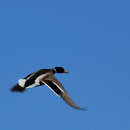More info for the terms:
cool-season,
cover,
fire regime,
warm-seasonFires can reduce predator activity through elimination of
hiding cover [
5]. Rotating spring fires have proved effective for
enhancing waterfowl habitat in Manitoba. To ensure the maximum area is
available for nesting, burning should be done in small parcels [
17].
Fire can be used to establish red goosefoot (Chenopodium rubrum), an
important duck food, by reducing impenetrable reed (Phragmites spp.)
thickets and breaking solid stands of meadow grass. To avoid harmful
effects on ducks burning should be done at times other than during the
primary nesting season or shortly before [
8]. Any burning can reduce
nesting cover, however. Autumn fires could potentially destroy rank
grasses needed for cover the following nesting season, so some cover
should be left at all times. In northern prairies burning should not be
conducted any more frequently than every two to three years [
8].
Duebbert and others [
18] recommend fire for rejuvenating prairie
pothole regions of cool- and warm-season grasses. Cool-season native
grasses should be burned from late March through mid-May or mid-August
through mid-September. Warm-season native grasses should be burned
between mid-May and mid-June [
18].
Fire has been used to provide openings in cattail (Typha spp.) marshes
for mallard foraging. In the St Clair Wildlife Refuge, Ontario, mallards
used openings that were created by winter burning followed by spring
flooding. Mallard foraging effort was positively correlated with invertebrate
biomass and opening size (P less than 0.001). Burning produced less cattail mortality
than winter mowing followed by spring flooding [
20]. The
Research Project
Summary of Ball's [
20] study provides details.
For more information on specific wetland species refer to the following
in this database: Phragmites, Carex, Spartina, Scirpus, and Eleocharis.
FIRE REGIMES : Find fire regime information for the plant communities in which this
species may occur by entering the species name in the
FEIS home page under
"Find FIRE REGIMES".

